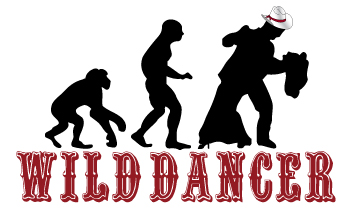Advice to Dance Bands and DJs
ALL social dancers WANT to dance properly, and most of them have taken some-or a lot of-lessons on the basic smooth and rhythm dances. So they also appreciate reasonable tempos. They are SOCIAL dancers, NOT competition dancers, but competition dancers DO insist on proper tempos, because they fit the timing of the movements being executed, which allow the most comfortable and attractive experience. Unfortunately, many of the groups that DJs play for have few or no trained dancers. Untrained dancers just want lively (or very slow "smoocher") tunes, and most of them do not actually follow the beat. Look at the standards set by the WDC/IDSF or the NDCA for the competition dances and our table of tempos for other dances, that are generally-accepted targets gathered from a set of experts.
Most dinner-dance groups have mostly couples who DO follow the beat, so the tempo IS important. A large fraction of the folks in these groups are older, retired people. That does NOT mean you should play everything at or below the bottom end of the speed range. A too-slow foxtrot or waltz is dreadful. It makes the couple really uncomfortable, and they think it is THEIR fault (worse, they both blame it on the man). No, it is the fault of the band or DJ. And in the case of foxtrot, a lot of these folks learned Magic Step, which is relatively fast (sometimes called a "swing-trot"), so they can easily handle foxtrots at the upper end of the range shown in the table of tempos.
Viennese Waltz-a beautiful sophisticated dance done around the world-is another frequent problem. A slow waltz is one thing, a Viennese (fast) waltz is another. It is NOT useful to play something halfway in between. Fewer than 10% of the couples in these groups can do anything that resembles a Viennese. (BTW, of the five competitive smooth dances, Viennese is the LAST one taught, because it is the most difficult, so unless they have had a LOT of lessons, they simply would not have had lessons in it. Its technique is VERY different from slow waltz; it is not just the same steps speeded up.). In fact, relatively few of the couples even know that there are truly two very different waltzes. If you DO play a Viennese or two, because it is lovely music or because you get a request for it, PLEASE PLEASE PLEASE play ones with a proper tempo. It may surprise you to hear that many Strauss waltzes, though lovely to listen to, are actually too fast to do a proper Viennese Waltz to (the people in Vienna have to cheat to keep up, and they don't actually do very pretty or comfortable versions in many cases).
In addition to tempo, a good dance song makes you want to do the dance. It has a "feel". E.g., east coast swing and night club two-step have roughly the same range of tempos, but east coast swing is bouncy and night club two-step is languid. More to the point is Cha Cha. Cha Cha is a spirited dance. Maybe Cherry Pink and Tea for Two were popular songs in their time, but they--and their ilk--are insipid, so you should choose mostly ones with a little snap to them. It is not just beats per minute, it is the feel.
Good Tempos for Popular Steps
For the most popular competition dances, there are well-established ranges of regulation tempos, which are an excellent guide for social dancers as well. A good place to see these is at the end of this topic in
Wikipedia.
For other popular couples dances, here is a guide to dance teachers' generally-accepted ranges:

